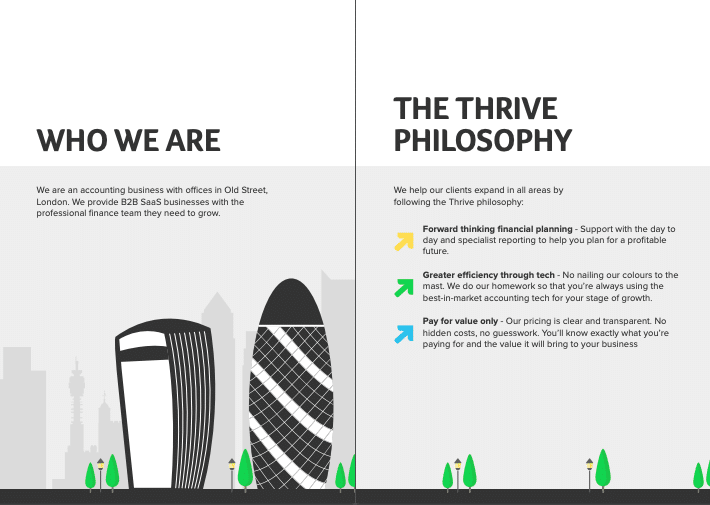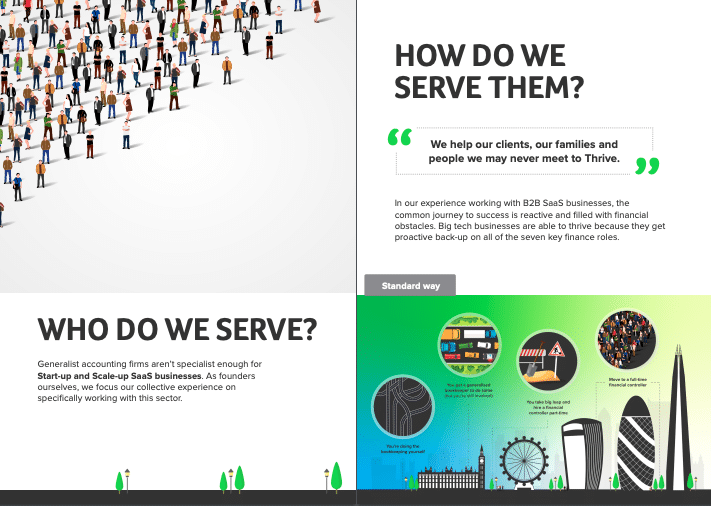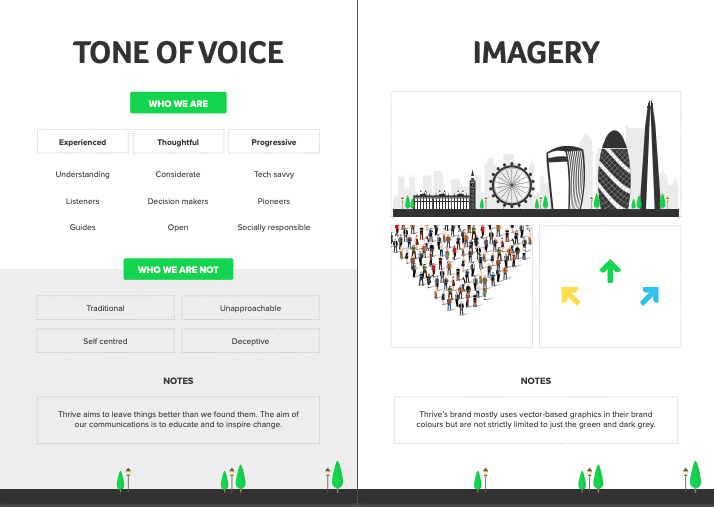
You’re outsourcing multiple areas such as marketing, social media and website management. You may even have a business coach. You’re outsourcing to keep you focused, get more done in a shorter amount of time, get help in the areas you lack skills and be supported in your journey towards your goals.
But what if your outsourcers all have different opinions on how to get the tasks done? What if they insist on using different systems on processes? What if your communication channels are awkward and uncomfortable because they have different ways of working and aren’t a values match?
You don’t just want your outsourcers to get the tasks done. You want them to be aiming for the same thing. How do you align your different outsourcers so they are working together with you and not just working for you?
There are a number of different things to think about, starting with choosing the right outsourcer.
Outsourcers you work with need to be a values match with your firm
Once you’ve decided you need to outsource, choosing who you want to work with can be difficult. They won’t be a fully fledged employee but they do need to form part of your team.
When selecting your outsourcing team, think about:
1. Are they a personality match?
You need to be able to work together in a productive, healthy way. Communication is key. Can you have an open, honest conversation with them? Are they open to constructive criticism and feedback? If not, you’ll have difficulty seeing eye-to-eye on things and it will feel hard to have open communication channels.
2. Are they a values match?
Your values are not only for your employees. They are for anyone you work with; clients and outsourcers. Your outsourcers are allowed to have their own values too (and we encourage them to) and these need to align with yours. If they don’t share your values, there is less likely to be a shared interest in success. They won’t necessarily have the same work attitudes as your team and there will most likely be a lack of camaraderie between the outsourcers and your team.
3. Do their systems work alongside yours?
Ideally, it’s best to integrate your outsourcers into your project management and/or communication system. This means you are keeping everything in one place and the whole team has access.
If they insist on using a different system, pay attention to how they handle these types of situations. Are they defensive about the system they use? Are they uninterested in trying something new or different? If so, this raises a few red flags. For example, they may be resistant to change and closed off to new ideas. It might hint towards a lack of collaboration which may mean you won’t work well together.
If you end up using their system, look at the integration possibilities to connect their system to yours.
At PF, we use Monday.com as our project management system and we integrate it with Slack so we get notifications in our communication channels. What project management systems or communication channels could you add the outsourcers to? You want to make it as seamless as possible to work together.
4. Are they providing a valuable resource you can’t manage internally
When you are thinking about outsourcing, it’s usually because you haven’t got the time to do the task or the skills, or both. If it’s more to do with time, is there someone in your team that could perhaps take on the work instead?
If it’s to do with skills, could you learn the skill easily and quickly or is there someone in your team that might possess those skills needed to do the job? If the answer is no to both, outsourcing is the way to go.
However, even if your team member COULD do the task, is it the most efficient use of their time? It might take your team member a lot longer to get the task done and there might be other tasks that are higher priority.
Know your goals and make sure all outsourcers are working towards these goals or you’ll have to choose your expert
If your outsourcers are not aligned, you’ll get different opinions from your outsourcers and won’t know who to listen to. You’ll end up not being able to make decisions or choosing one outsourcer you trust the most or whose opinions align with yours. This will likely cause tension between the other outsourcers, yourself and your team.
In order to avoid this, make sure all outsourcers know about your goals and are working towards them.
But first, start by defining your goals. Be clear about what you’re looking to achieve. Set a time frame of when you want to achieve your goals. e.g. Employee 3 new team members by X date or increase our monthly fee to X by X date.
Think about big picture goals for your business, systems goals, hiring and team goals, client goals, finance goals and personal goals (because these integrate with your business goals). Think about what success would look like when you achieve your goals and what failure would look like if you didn’t.
Once you have defined your goals, document them and share them with your outsourcing team. Make sure they don’t just know the goals but understand what they mean for your firm.
Different outsourcers have various skill sets and they’ll also have different opinions and approaches. We’ve worked with business coaches in the past who are solely focused on getting ROI as fast as possible, no matter the quality of the leads. That was their approach to the client achieving their goals. Our approach at PF is different. Whilst we also want the client to achieve their goals, the way we know best to help our client do this is to prioritise getting the right type of leads in the door, even if that means fewer leads or the lead generation process taking longer.
Revisit the goals every 6 months to make sure you are all still on the same track. Have a goals session with your team. Look at the goals you defined initially and discuss if these are done, in progress or not started. Adjust the goals accordingly and agree on any new goals and timeframes. Then share the updated goals with your outsourcers and talk with them about the goals. Together, come up with a new plan on how to achieve them.
If you don’t review the goals every 6 months:
- your goals will feel stale
- you won’t necessarily know if you’ve achieved your goals
- you won’t be firm on the time frames; or
- you’ll extend the time frames without realising it.
Reviewing your goals every 6 months allows you to see your progress and adjust goals and timeframes as needed.
Create a plan on how you are going to achieve the goals set out
Create a plan aligned with your goals and share it with your outsourcers. Together, work out what needs to be done by each team within the plan and assign tasks and deadlines to each outsourcer.
Where outsourcers may overlap in tasks, set up a meeting between the various outsourcers to clarify anything that may cause issues. For example, your designers may need to meet with your web team to understand how the site is built and what is possible when it comes to design. Your social media team will want to know what your marketing team has planned and how social media can play a role in contributing to the bigger picture of the marketing plan.
If the outsourcers don’t want to talk to each other, address why they aren’t willing to collaborate. They might even charge you more to spend time talking to other outsourcers. Think about how you can combine meetings between outsourcers without having to book additional calls. Think about what you can do to prep before the combined meetings. Send a video with your thoughts or the thoughts of your outsourcers and create an agenda so you can keep everyone on track in order to make the most of the meeting time.
Check in on the plan regularly. We have monthly marketing meetings with our clients to make sure we’re all still on the same page and everyone knows what tasks they have to complete and by when.
Know who you are and who your ideal audience is and share it with your team and your outsourcers to keep consistency
Have a strong brand and understand who you are as a firm. Everyone in your team needs to be able to rattle off your firm values by heart.
Work on and define your ideal audience. Who do you want to work with? What type of clients do you enjoy working with? What are their characteristics, personalities and pain points? What do they need help with?
Document your ideal audience and what makes up your brand. This could be in something like an employee handbook or better still, a brand book.
Anyone who works on your marketing needs to understand who you are and who you serve. They need to know your style and tone of voice and what words you use and don’t use. Do you have a formal tone, a relaxed and friendly tone? Do you use swear words and emojis?
They need to know your values and what they mean for you as a team and for your clients. They also need to understand what imagery suits your brand and your ideal audience.
Create a brand book covering the following:
- Who you are
- Who you serve
- Your plan
- Your tone of voice (including words you use and don’t use)
- Your chosen fonts and colours
- Imagery and icons
- Your brand in action
Here are a few pages from Thrive’s brand book as an example:


Involve your team in the decision making process
You don’t have to do it all alone. Here’s how to involve your team in the marketing for your firm.
Make sure your team knows and understands your brand, who your ideal audience is, what the goals are and what the plan is too.
Select the right team members and have them be part of the outsourcing decisions. They will be more likely to work better with outsourcers if they’ve been part of the selection process (this is the same for hiring new team members). Get the team involved in choosing the outsourcers your firm wants to work with. Have them do the research on different outsourcers and put together the shortlist. .
Get them to be in on all the meetings or workshops with the outsourcers. Make sure to have a meeting at least once a month with your outsourcers. Don’t leave it any longer than that and talk more often if need be.
During our monthly marketing chats with our clients, we go through their current numbers and plan for the month ahead. We spend time reviewing tasks that are complete and going through tasks that need to be done by the client and by the PF team. We also use it as an opportunity to discuss how the partnership is going. At the end of the meeting, we agree on an actions list and set up the following month’s meeting.
Select an agency that can do it all for you
If you can find one agency to manage all your outsourced needs, that’s first prize. It won’t be up to you to align the outsourcers and they’ll already be on the same team, have the same values and use the same systems.
When you work with PF, you get the full package – strategy, design, website management, social media management and monthly marketing.
You get a team of people working on your marketing – a Client Marketing Manager (CMM), an assistant, a designer and a content writer.
The CMMs and the creative teams hold brainstorming sessions where they discuss all the clients, new ideas, inspiration, problems and solutions so while you have one CMM who is your primary relationship contact, they are supported by the whole PF team.
When we worked with Comerford Foley on their new website, the whole team PF played a role in the development of their site, which meant they got the experience, skills and knowledge from multiple people instead of just 1.
“…Great to see Camilla and the whole team give ideas and collaborate. We had real peace of mind seeing that there really was a lot of thought and energy going into the project from the whole team. We knew we were getting the benefit of 3 or 4 very experienced people before it even went to the developers.” Ger Foley
Remember, you need to know your goals and make sure all outsourcers are working towards these goals or you’ll have to choose your expert. This will not only change the relationships you have with your other outsourcers, but it will mean everyone is working for a different cause.
Are your outsourcers all aligned? What might you need to work on when it comes to the relationship between you, your team and your outsourcers?



